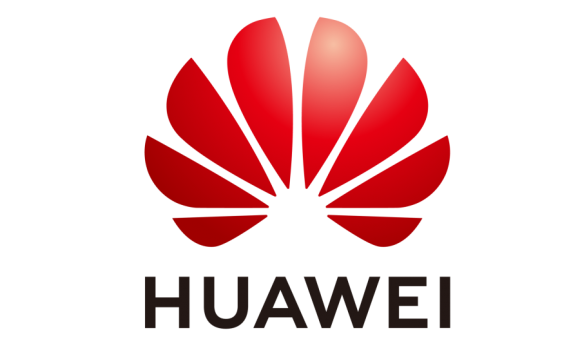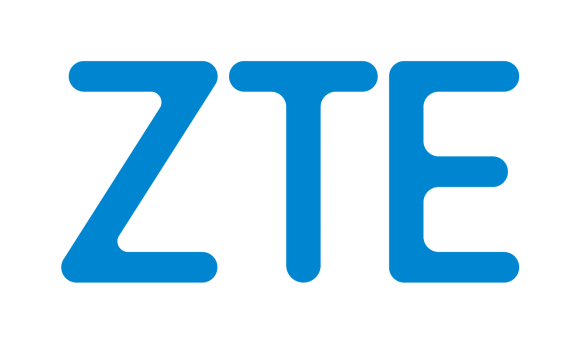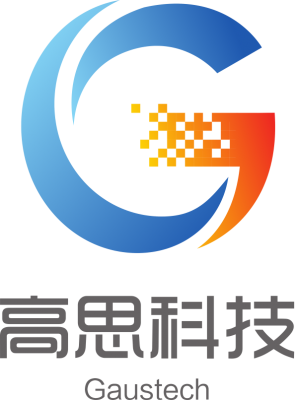Tuesday 30 March 2021
- P1. 6G: The Next Horizon – From Connected People and Things to Connected Intelligence
- P2. Full Duplex: Technologies, Standards, and Roadmap
Wednesday 31 March 2021
- P3. Integration of Radar Sensing and Communications (ISC)
- P4. Trends and Technologies for 5G Evolution
Thursday 1 April 2021
- P5. Reconfigurable Intelligent Surfaces (RIS) for B5G Wireless Communications
- P6. 5G Exposure: Health Risks and New EMF-Aware Cellular Networks Planning
Details
Tuesday 30 March 2021, 14:00 – 15:30
P1. 6G: The Next Horizon – From Connected People and Things to Connected Intelligence
Organizer: Yan Chen, Huawei, Canada
Panelists:
- Luke Ibbetson, Vodafone, UK
- Guangyi Liu, China Mobile, China
- Zhisheng Niu, Tsinghua University, China
- Stefan Parkvall, Ericsson, Sweden
- Mehdi Bennis, Oulu University, Finland
Abstract: The overwhelming interest shown through the ongoing research, together with many government initiatives that support 6G research in various countries, indicate that 6G will have a very significant presence in future wireless communications. Recently, the ITU-R Working Party 5D has also agreed to initiate a study on technology trends for 6G followed by starting a 6G vision and requirement study in the near future. In response to the above momentum, the proposed panel aims at providing an interactive platform for industry and academic to timely exchange research, findings, and key technical challenges associated with 6G. In this context, papers sharing views on one or more of the following fundamental questions are welcomed, but not limited to:
- Vision: What is 6G? What is the fundamental difference between 6G and 5G?
- Requirements: What are the potential new use cases, applications and services of 6G?
- What are the potential performance requirements?
- Theoretical foundations: What are the new theoretical foundations to shape 6G technologies and to draw their performance boundaries?
- Enabling Technologies: What are the potential key enabling technologies for 6G to achieve one or more of the new performance requirements?
Biographies:
 Yan Chen (Moderator) received her B.Sc. and Ph.D. degrees from Chu Kochen Honored College and Institute of Information and Communication Engineering in 2004 and 2009, respectively, from Zhejiang University. She was a visiting researcher at Hong Kong University of Science and Technology from 2008 to 2009. She joined Huawei Technologies in 2009 and from 2010 to 2013, she was the project manager and technical leader of Huawei internal Green Radio project studying energy efficient solutions for wireless networks, and also the technical leader of the umbrella project GTT (Green Transmission Technology) under GreenTouchTM Consortium. From 2013 on, she has been a techincal leader of Huawei research on 5G air interface design and focuses on multiple access including NOMA, grant-free transmission, mission critical and massive IoT, and the related standardization in 3GPP. She won the IEEE Communication Society Award for Advances in Communication in 2017.
Yan Chen (Moderator) received her B.Sc. and Ph.D. degrees from Chu Kochen Honored College and Institute of Information and Communication Engineering in 2004 and 2009, respectively, from Zhejiang University. She was a visiting researcher at Hong Kong University of Science and Technology from 2008 to 2009. She joined Huawei Technologies in 2009 and from 2010 to 2013, she was the project manager and technical leader of Huawei internal Green Radio project studying energy efficient solutions for wireless networks, and also the technical leader of the umbrella project GTT (Green Transmission Technology) under GreenTouchTM Consortium. From 2013 on, she has been a techincal leader of Huawei research on 5G air interface design and focuses on multiple access including NOMA, grant-free transmission, mission critical and massive IoT, and the related standardization in 3GPP. She won the IEEE Communication Society Award for Advances in Communication in 2017.
 Luke Ibbetson has been with Vodafone since 1996 and currently leads the Vodafone Group Research and Development organisation, responsible for all aspects of future research including trials of emerging / disruptive technologies, new industry partnerships and the creation of future revenue engines through advanced technology. Luke is an active participant in Industry Initiatives including 5GAA (Board member), Chairman of the NGMN 5G Board Committee, Advisory Board for UK TechWorks, and Board member for several venture backed new technology companies in which Vodafone has invested. Luke is a proud pioneer of Narrow Band IoT technology and currently shaping Vodafone's thinking on 6G. Luke is a passionate supporter of innovative thinking, helping to create new opportunities for technology to change lives and society for the better.
Luke Ibbetson has been with Vodafone since 1996 and currently leads the Vodafone Group Research and Development organisation, responsible for all aspects of future research including trials of emerging / disruptive technologies, new industry partnerships and the creation of future revenue engines through advanced technology. Luke is an active participant in Industry Initiatives including 5GAA (Board member), Chairman of the NGMN 5G Board Committee, Advisory Board for UK TechWorks, and Board member for several venture backed new technology companies in which Vodafone has invested. Luke is a proud pioneer of Narrow Band IoT technology and currently shaping Vodafone's thinking on 6G. Luke is a passionate supporter of innovative thinking, helping to create new opportunities for technology to change lives and society for the better.
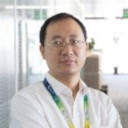 Guangyi Liu received his PhD. from Beijing University of Posts and Telecommunications in 2006. He joined China Mobile since 2006, now he is the leading specialist and 6G director of China Mobile Group. Before he joined China Mobile, he has worked for Shanghai Bell and Siemens (Now Nokia) for 3 years. He has led the standardization and industrialization of 4G and 5G in China mobile from 2007 to 2019. Now he is leading the research of 6G. He is also acting as the vice chair of THz and mm-wave industry alliance, and has acted as the chair of spectrum working group and coordinator of 5G eMBB program in Global TD-LTE Initiative (GTI). He has been granted more than 150 patents, and authored and coauthored more than 8 books and published more than 150 papers in IEEE journal and conference.
Guangyi Liu received his PhD. from Beijing University of Posts and Telecommunications in 2006. He joined China Mobile since 2006, now he is the leading specialist and 6G director of China Mobile Group. Before he joined China Mobile, he has worked for Shanghai Bell and Siemens (Now Nokia) for 3 years. He has led the standardization and industrialization of 4G and 5G in China mobile from 2007 to 2019. Now he is leading the research of 6G. He is also acting as the vice chair of THz and mm-wave industry alliance, and has acted as the chair of spectrum working group and coordinator of 5G eMBB program in Global TD-LTE Initiative (GTI). He has been granted more than 150 patents, and authored and coauthored more than 8 books and published more than 150 papers in IEEE journal and conference.
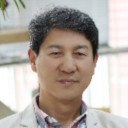 Zhisheng Niu graduated from Beijing Jiaotong University, China, in 1985, and got his M.E. and D.E. degrees from Toyohashi University of Technology, Japan, in 1989 and 1992, respectively. During 1992-94, he worked for Fujitsu Laboratories Ltd., Japan, and in 1994 joined with Tsinghua University, Beijing, China, where he is now a professor at the Department of Electronic Engineering. His major research interests include queueing theory and traffic engineering, wireless communications and mobile Internet, vehicular communications and smart networking, and green communication and networks.
Zhisheng Niu graduated from Beijing Jiaotong University, China, in 1985, and got his M.E. and D.E. degrees from Toyohashi University of Technology, Japan, in 1989 and 1992, respectively. During 1992-94, he worked for Fujitsu Laboratories Ltd., Japan, and in 1994 joined with Tsinghua University, Beijing, China, where he is now a professor at the Department of Electronic Engineering. His major research interests include queueing theory and traffic engineering, wireless communications and mobile Internet, vehicular communications and smart networking, and green communication and networks.
Dr. Niu has been serving IEEE Communications Society since 2000, first as Chair of Beijing Chapter (2000-2008) and then as Director of Asia-Pacific Board (2008-2009), Director for Conference Publications (2010-2011), Chair of Emerging Technologies Committee (2014-2015), and Director for Online Contents (2018-2019). He has also served as editor of IEEE Wireless Communication (2009-2013) and associate Editor-in-Chief of IEEE/CIC joint publication China Communications (2012-2016), and currently serving as Editor-in-Chief of IEEE Trans. Green Commun. & Networks (2020-2022). He received the Outstanding Young Researcher Award from Natural Science Foundation of China in 2009, Best Paper Awards from IEEE Communication Society Asia-Pacific Board in 2013 and from Journal of Communications and Information Networks (JCIN) in 2019, Distinguished Technical Achievement Recognition Award from IEEE Communications Society Green Communications and Computing Technical Committee in 2018, and Harold Sobol Award for Exemplary Service to Meetings & Conferences from IEEE Communication Society in 2019. He was selected as a distinguished lecturer of IEEE Communication Society (2012-2015) as well as IEEE Vehicular Technologies Society (2014-2018). He is a fellow of both IEEE and IEICE.
 Stefan Parkvall is currently a Senior Expert at Ericsson Research working with research on 6G and future radio access. He is one of the key persons in the development of HSPA, LTE and NR radio access and has been deeply involved in 3GPP standardization for many years. Dr Parkvall is a fellow of the IEEE, served as an IEEE Distinguished lecturer 2011-2012, and is co-author of several popular books such as “3G Evolution – HSPA and LTE for Mobile Broadband”, “4G – LTE/LTE-Advanced for Mobile Broadband”, “4G, LTE Advanced Pro and the Road to 5G”, and “5G NR – The Next Generation Wireless Access”. He has more than 1500 patents in the area of mobile communication. In 2005, he received the Ericsson "Inventor of the Year" award, in 2009 the Swedish Government’s Major Technical Award for his contributions to the success of HSPA, and in 2014 he and colleagues at Ericsson was one of three finalists for the European Inventor Award, the most prestigious inventor award in Europe, for their contributions to LTE. Dr Parkvall received the Ph.D. degree in electrical engineering from the Royal Institute of Technology in 1996. His previous positions include assistant professor in communication theory at the Royal Institute of Technology, Stockholm, Sweden, and a visiting researcher at University of California, San Diego, USA.
Stefan Parkvall is currently a Senior Expert at Ericsson Research working with research on 6G and future radio access. He is one of the key persons in the development of HSPA, LTE and NR radio access and has been deeply involved in 3GPP standardization for many years. Dr Parkvall is a fellow of the IEEE, served as an IEEE Distinguished lecturer 2011-2012, and is co-author of several popular books such as “3G Evolution – HSPA and LTE for Mobile Broadband”, “4G – LTE/LTE-Advanced for Mobile Broadband”, “4G, LTE Advanced Pro and the Road to 5G”, and “5G NR – The Next Generation Wireless Access”. He has more than 1500 patents in the area of mobile communication. In 2005, he received the Ericsson "Inventor of the Year" award, in 2009 the Swedish Government’s Major Technical Award for his contributions to the success of HSPA, and in 2014 he and colleagues at Ericsson was one of three finalists for the European Inventor Award, the most prestigious inventor award in Europe, for their contributions to LTE. Dr Parkvall received the Ph.D. degree in electrical engineering from the Royal Institute of Technology in 1996. His previous positions include assistant professor in communication theory at the Royal Institute of Technology, Stockholm, Sweden, and a visiting researcher at University of California, San Diego, USA.
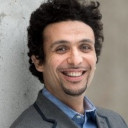 Mehdi Bennis is an Associate Professor at the Centre for Wireless Communications, University of Oulu, Finland, Academy of Finland Research Fellow and head of the intelligent connectivity and networks/systems group (ICON). His main research interests are in radio resource management, heterogeneous networks, game theory and distributed machine learning in 5G networks and beyond. He has published more than 200 research papers in international conferences, journals and book chapters. He has been the recipient of several prestigious awards including the 2015 Fred W. Ellersick Prize from the IEEE Communications Society, the 2016 Best Tutorial Prize from the IEEE Communications Society, the 2017 EURASIP Best paper Award for the Journal of Wireless Communications and Networks, the all-University of Oulu award for research, the 2019 IEEE ComSoc Radio Communications Committee Early Achievement Award and the 2020 Clarviate Highly Cited Researcher by the Web of Science. Dr Bennis is an editor of IEEE TCOM and Specialty Chief Editor for Data Science for Communications in the Frontiers in Communications and Networks journal. Dr Bennis is an IEEE Fellow.
Mehdi Bennis is an Associate Professor at the Centre for Wireless Communications, University of Oulu, Finland, Academy of Finland Research Fellow and head of the intelligent connectivity and networks/systems group (ICON). His main research interests are in radio resource management, heterogeneous networks, game theory and distributed machine learning in 5G networks and beyond. He has published more than 200 research papers in international conferences, journals and book chapters. He has been the recipient of several prestigious awards including the 2015 Fred W. Ellersick Prize from the IEEE Communications Society, the 2016 Best Tutorial Prize from the IEEE Communications Society, the 2017 EURASIP Best paper Award for the Journal of Wireless Communications and Networks, the all-University of Oulu award for research, the 2019 IEEE ComSoc Radio Communications Committee Early Achievement Award and the 2020 Clarviate Highly Cited Researcher by the Web of Science. Dr Bennis is an editor of IEEE TCOM and Specialty Chief Editor for Data Science for Communications in the Frontiers in Communications and Networks journal. Dr Bennis is an IEEE Fellow.
Tuesday 30 March 2021, 16:00 – 17:30
P2. Full Duplex: Technologies, Standards, and Roadmap
Organizer: Thomas Haustein, Fraunhofer Institute for Telecommunications, Heinrich Hertz Institute, Germany
Panelists:
- Peiwei Wang, Principal Engineer & Manager, Huawei, Canada
- Jaehoon Chung, Project Leader on 5G, Korea
- Besma Smida, Associate Professor, University of Illinois, Chicago, USA
- Aydin Sezgin, Full Professor, RUB University, Bochum, Germany
- Emilio Calvanese Strinati, 6G Program Director, CEA Leti, Grenoble, France
Abstract: In the recent years, full duplex communication technology is progressing and finding its way to the standards. Full Duplex is a duplexing scheme that allows a communication device to simultaneously transmit and receive wireless signals on the same channel (frequency band). Enabled by means of self-interference and cross link interference management methodology, Full Duplex can significantly increase the throughput for each allocated channel and furthermore improve the total system capacity. The inherent capability of Full Duplex can provide an opportunity to reduce round-trip latency for data transmission, which is due to transmission of acknowledgment or feedback information and to implement an in-band and out-of-band relay system.
Cross link interference management for dynamic TDD or flexible duplex in cellular systems has been specified in 3GPP standardization, which can also be used for the cross link interference management for full duplex radios and paves the way for full duplex to become a part of networking application. Cross link interference management can be further studied for full duplex in the context of the 5G standards. As a further enhancement, self-interference management should become a study for future evolutions of the 5G standard.
This panel brings together leading experts from infrastructure and terminal manufacturers, chipset vendors and academia as well as leading parties in the standardizations of the wireless communications industry ecosystem. It provides an excellent chance for the industry players, researchers, and standardization experts to share their views about the full duplex radio from the angle of technology and standardization at the same time. We expect that this panel will put more light on the ongoing research and development progress in the area of the full duplex communication and how the way for standardization and commercial utilization can be paved.
Biographies:
 Thomas Haustein (Moderator) received the Dr.-Ing. (Ph.D.) degree in mobile communications from the University of Technology Berlin, Germany, in 2006. In 1997, he was with the Fraunhofer Institute for Telecommunications, Heinrich Hertz Institute (HHI), Berlin, where he worked on wireless infrared systems and radio communications with multiple antennas and OFDM. He focused on real-time algorithms for baseband processing and advanced multiuser resource allocation. From 2006 till 2008, he was with Nokia Siemens Networks, where he conducted research for 4G. Since 2009 he is heading the Wireless Communications Department at Fraunhofer HHI focusing on 5G and Industrial Wireless.
Thomas Haustein (Moderator) received the Dr.-Ing. (Ph.D.) degree in mobile communications from the University of Technology Berlin, Germany, in 2006. In 1997, he was with the Fraunhofer Institute for Telecommunications, Heinrich Hertz Institute (HHI), Berlin, where he worked on wireless infrared systems and radio communications with multiple antennas and OFDM. He focused on real-time algorithms for baseband processing and advanced multiuser resource allocation. From 2006 till 2008, he was with Nokia Siemens Networks, where he conducted research for 4G. Since 2009 he is heading the Wireless Communications Department at Fraunhofer HHI focusing on 5G and Industrial Wireless.
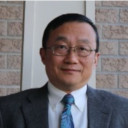 Peiwei Wang is currently a principal engineer and R&D manager of full duplex technologies at Huawei Canada Technologies Co., Ltd. He received MSc degree in computer science from Chongqing University, China, in 1987 and a visiting scholar of electrical engineering in University of Texas at Austin from 1995-1997. He was with Nortel Networks and Blackberry where he involved in research and development in 3G and 4G wireless base station and terminal products and led the projects of integration and implementation of end-to-end wireless solutions. His current research interests are the fundamental enabling technologies on experimental full duplex wireless systems.
Peiwei Wang is currently a principal engineer and R&D manager of full duplex technologies at Huawei Canada Technologies Co., Ltd. He received MSc degree in computer science from Chongqing University, China, in 1987 and a visiting scholar of electrical engineering in University of Texas at Austin from 1995-1997. He was with Nortel Networks and Blackberry where he involved in research and development in 3G and 4G wireless base station and terminal products and led the projects of integration and implementation of end-to-end wireless solutions. His current research interests are the fundamental enabling technologies on experimental full duplex wireless systems.
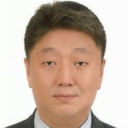 Jae Hoon Chung has more than 10 years of industrial R&D experience in various technical areas of 4G/5G wireless communication. From 2006 to 2011, he obtained extensive experience in research works for LTE and LTE-Advanced technology development and 3GPP RAN standardization by leading /managing 3GPP RAN1 standard delegate and coordinating technical contributions for LTE/LTE-A. From 2012 to current, he serves as project leader in advanced technology R&D for 5G. Jae Hoon Chung is advising the Korean government’s on 5G R&D planning and serves as the vice representative of Global Strategy Committee in 5G Forum.
Jae Hoon Chung has more than 10 years of industrial R&D experience in various technical areas of 4G/5G wireless communication. From 2006 to 2011, he obtained extensive experience in research works for LTE and LTE-Advanced technology development and 3GPP RAN standardization by leading /managing 3GPP RAN1 standard delegate and coordinating technical contributions for LTE/LTE-A. From 2012 to current, he serves as project leader in advanced technology R&D for 5G. Jae Hoon Chung is advising the Korean government’s on 5G R&D planning and serves as the vice representative of Global Strategy Committee in 5G Forum.
 Besma Smida is an Associate Professor of Electrical and Computer Engineering at University of Illinois at Chicago. After completing her appointment as a Postdoc and later a Lecturer at Harvard University, she became an Assistant Professor of Electrical and Computer Engineering at Purdue University Calumet. Additionally, she was a Research Engineer in the Technology Evolution and Standards group of Microcell, Inc. (now Rogers Wireless), Montreal, Canada. Dr. Smida took part in wireless normalization committees (3GPP, T1P1). She obtained the Ph. D. and M. Sc. from the University of Quebec (INRS), Montreal, Canada. Her research focuses on wireless communication theory, full-duplex communication, radar, and backscatter modulation.
Besma Smida is an Associate Professor of Electrical and Computer Engineering at University of Illinois at Chicago. After completing her appointment as a Postdoc and later a Lecturer at Harvard University, she became an Assistant Professor of Electrical and Computer Engineering at Purdue University Calumet. Additionally, she was a Research Engineer in the Technology Evolution and Standards group of Microcell, Inc. (now Rogers Wireless), Montreal, Canada. Dr. Smida took part in wireless normalization committees (3GPP, T1P1). She obtained the Ph. D. and M. Sc. from the University of Quebec (INRS), Montreal, Canada. Her research focuses on wireless communication theory, full-duplex communication, radar, and backscatter modulation.
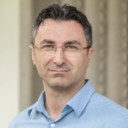 Aydin Sezgin received the Dipl.Ing. (M.S.) degree in communications engineering from Technische Fachhochschule Berlin (TFH), Berlin, in 2000, and the Dr. Ing. (Ph.D.) degree in electrical engineering from TU Berlin, in 2005.
Aydin Sezgin received the Dipl.Ing. (M.S.) degree in communications engineering from Technische Fachhochschule Berlin (TFH), Berlin, in 2000, and the Dr. Ing. (Ph.D.) degree in electrical engineering from TU Berlin, in 2005.
From 2001 to 2006, he was with the Heinrich-Hertz-Institut, Berlin. From 2006 to 2008, he held a postdoctoral position, and was also a lecturer with the Information Systems Laboratory, Department of Electrical Engineering, Stanford University, Stanford, CA, USA. From 2008 to 2009, he held a postdoctoral position with the Department of Electrical Engineering and Computer Science, University of California, Irvine, CA, USA. From 2009 to 2011, he was the Head of the Emmy-Noether- Research Group on Wireless Networks, Ulm University. In 2011, he joined TU Darmstadt, Germany, as a professor. He is currently a professor of information systems and sciences with the Department of Electrical Engineering and Information Technology, Ruhr-Universität Bochum, Germany. He is interested in signal processing, communication, and information theory, with a focus on wireless networks. He has published several book chapters more than 50 journals and 170 conference papers in these topics. He has coauthored a book on multi-way communications. Aydin is a winner of the ITG-Sponsorship Award, in 2006. He was a first recipient of the prestigious Emmy-Noether Grant by the German Research Foundation in communication engineering, in 2009. He has coauthored papers that received the Best Poster Award at the IEEE Communication Theory Workshop, in 2011, the Best Paper Award at ICCSPA, in 2015, and the Best Paper Award at ICC, in 2019. He has served as an Associate Editor for the IEEE Transactions on Wireless Communications, from 2009 to 2014.
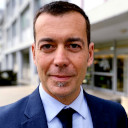 Emilio Calvanese Strinati obtained his Engineering Master degree in 2001 from the University of Rome ‘La Sapienza’ and his Ph.D in Engineering Science in 2005. He then started working at Motorola Labs in Paris in 2002. Then in 2006 he joint CEA/LETI as a research engineer. From 2007, he becomes a PhD supervisor. From 2010 to 2012, Dr. Calvanese Strinati has been the co-chair of the wireless working group in GreenTouch Initiative which deals with design of future energy efficient communication networks. From 2011 to 2016 he was the Smart Devices & Telecommunications European collaborative strategic programs Director. Between December 2016 and January 2020 is was the Smart Devices & Telecommunications Scientific and Innovation Director. Since February 2020 he is the Nanotechnologies and Wireless for 6G (New-6G) Program Director focusing on future 6G technologies. In December 2013 he has been elected as one of the five representative of academia and research center in the Net!Works 5G PPP ETP. From 2017 to 2018 he was one of the three moderators of the 5G future network expert group. Between 2016 and 2018 he was the coordinator of the H2020 joint Europe and South Korea 5GCHAMPION project that showcased at the 2018 winter Olympic Games, 5G technologies in realistic operational environments. Since July 2018 he is the coordinator of the H2020 joint Europe and South Korea 5G-AllStar project. Since 2018 he holds the French Research Director Habilitation (HDR). In 2021 he started the coordination of the H2020 European project RISE-6G, focusing on the design and operation of Reconfigurable Intelligent Surfaces in future high frequency 6G networks. Since February 2021 he is also the director of the New-6G (Nano Electronic & Wireless for 6G) initiative , dedicated to the required convergence between microelectronic & telecom, hardware & software, network & equipment for upcoming 6G technologies.
Emilio Calvanese Strinati obtained his Engineering Master degree in 2001 from the University of Rome ‘La Sapienza’ and his Ph.D in Engineering Science in 2005. He then started working at Motorola Labs in Paris in 2002. Then in 2006 he joint CEA/LETI as a research engineer. From 2007, he becomes a PhD supervisor. From 2010 to 2012, Dr. Calvanese Strinati has been the co-chair of the wireless working group in GreenTouch Initiative which deals with design of future energy efficient communication networks. From 2011 to 2016 he was the Smart Devices & Telecommunications European collaborative strategic programs Director. Between December 2016 and January 2020 is was the Smart Devices & Telecommunications Scientific and Innovation Director. Since February 2020 he is the Nanotechnologies and Wireless for 6G (New-6G) Program Director focusing on future 6G technologies. In December 2013 he has been elected as one of the five representative of academia and research center in the Net!Works 5G PPP ETP. From 2017 to 2018 he was one of the three moderators of the 5G future network expert group. Between 2016 and 2018 he was the coordinator of the H2020 joint Europe and South Korea 5GCHAMPION project that showcased at the 2018 winter Olympic Games, 5G technologies in realistic operational environments. Since July 2018 he is the coordinator of the H2020 joint Europe and South Korea 5G-AllStar project. Since 2018 he holds the French Research Director Habilitation (HDR). In 2021 he started the coordination of the H2020 European project RISE-6G, focusing on the design and operation of Reconfigurable Intelligent Surfaces in future high frequency 6G networks. Since February 2021 he is also the director of the New-6G (Nano Electronic & Wireless for 6G) initiative , dedicated to the required convergence between microelectronic & telecom, hardware & software, network & equipment for upcoming 6G technologies.
E. Calvanese Strinati has published around 140 papers in international conferences, journals and books chapters, given more than 200 international invited talks, keynotes and tutorials. He is the main inventor or co-inventor of more than 65 patents. He has organized more than 100 international conferences, workshops, panels and special sessions on green communications, heterogeneous networks and cloud computing hosted in international conferences as IEEE GLOBCOM, IEEE PIMRC, IEEE WCNC, IEEE ICC, IEEE VTC, EuCnC, IFIP, EUCnC and European Wireless.
Wednesday 31 March 2021, 14:00 – 15:30
P3. Integration of Radar Sensing and Communications (ISC)
Organizer: Tingting Zhang, Harbin Institute of Technology, Shenzhen, China
Panelists:
- Andreas Molisch, University of Southern California, USA
- Yi Huang, University of Liverpool, UK
- Pan Cao, University of Hertfordshire, UK
- Yuan Shen, Tsinghua University, China
- Andrea Conti, University of Ferrara, Italy
Abstract: Radar sensing and wireless communications have been two of the most common civil and military applications via radio frequency signals for decades. Recently, with the wide deployment of mmWave and massive MIMO in 5G and beyond, the integration of radar sensing and communications (ISC) offers a great potential in many spectrum and cost limited scenarios, such as autonomous vehicles networking, WiFi-based indoor localization, collaborative sensing, etc.
Despite different purposes, there are high similarities between radar sensing and wireless communications, which bring the possibilities of ISC. First, they have similar hardware structure and system components in both baseband and RF ends, especially in the modern digital implementation era. Second, to provide more accessible spectrum resources, the communication frequency bands in 5G and beyond tend to be close to those of radar sensing. The large bandwidth available in the mmWave band would not only enable higher data rates, but also significantly improve range resolution. Furthermore, large-scale antenna arrays are capable of formulating “pencil-like” beams that accurately point to the directions of interest. Nevertheless, the success of spectrum and hardware sharing between radar and communication systems heavily depends on high-quality joint designs, to fully exploit the potentials of ISC.
Research efforts are well underway to address the issues arising with communication and radar spectrum sharing, as well as the design of dual functional radar communications, to make full use of radio frequencies that are usually designed for only a single function. However, many problems about ISC still remain open, such as the unified theoretical frameworks, the fundamental performance limits, the waveform design, the signal processing algorithms, and prototype implementations. This panel brings together experts in an effort to identify and discuss the major technical challenges, recent breakthroughs, and new applications related to ISC.
Biographies:
 Tingting Zhang (Moderator) received the B.S. (with honors), M. S. and Ph.D. degrees in electronic engineering from Harbin Institute of Technology (HIT), Harbin, China, in 2003, 2005 and 2009, respectively. He is currently a Professor with Harbin Institute of Technology, Shenzhen. His main research interests include wireless localization, integration of sensing and communication, and autonomous vehicle navigation and control, etc. Dr. Zhang serves as the Associate Editor of Frontiers in Communications and Networks, and TPC member for several international conferences, such as ICC, GLOBECOM, ICCC, and VTC. He received the Outstanding Postdoctoral Award of HIT, Shenzhen Graduate School in 2011. He also received Shenzhen High Level Talent Program award in 2012.
Tingting Zhang (Moderator) received the B.S. (with honors), M. S. and Ph.D. degrees in electronic engineering from Harbin Institute of Technology (HIT), Harbin, China, in 2003, 2005 and 2009, respectively. He is currently a Professor with Harbin Institute of Technology, Shenzhen. His main research interests include wireless localization, integration of sensing and communication, and autonomous vehicle navigation and control, etc. Dr. Zhang serves as the Associate Editor of Frontiers in Communications and Networks, and TPC member for several international conferences, such as ICC, GLOBECOM, ICCC, and VTC. He received the Outstanding Postdoctoral Award of HIT, Shenzhen Graduate School in 2011. He also received Shenzhen High Level Talent Program award in 2012.
 Andreas F. Molisch (Fellow, IEEE) received the Ph.D. and Habilitation degrees from TU Vienna in 1994 and 1999, respectively. After ten years in industry, he joined the University of Southern California, where he is currently the Solomon Golomb–Andrew and the Erna Viterbi Chair Professor. He is the author of four books, 21 book chapters, more than 250 journal articles, 350 conference papers, as well as 80 patents. His research interests include wireless communications, with emphasis on wireless propagation channels, ultrawideband signaling and localization, multiantenna systems, novel modulation methods, caching for wireless content distribution, and edge computing. He is a fellow of the National Academy of Inventors, AAS, and IET, as well as a member of the Austrian Academy of Sciences and recipient of numerous awards
Andreas F. Molisch (Fellow, IEEE) received the Ph.D. and Habilitation degrees from TU Vienna in 1994 and 1999, respectively. After ten years in industry, he joined the University of Southern California, where he is currently the Solomon Golomb–Andrew and the Erna Viterbi Chair Professor. He is the author of four books, 21 book chapters, more than 250 journal articles, 350 conference papers, as well as 80 patents. His research interests include wireless communications, with emphasis on wireless propagation channels, ultrawideband signaling and localization, multiantenna systems, novel modulation methods, caching for wireless content distribution, and edge computing. He is a fellow of the National Academy of Inventors, AAS, and IET, as well as a member of the Austrian Academy of Sciences and recipient of numerous awards
 Yi Huang (Fellow, IEEE) received BSc in Physics (Wuhan University) in 1984, MSc (Eng) in Microwave Engineering (NRIET) in 1987, and DPhil in Communications from the University of Oxford, UK in 1994. He has been conducting research in the areas of wireless communications, applied electromagnetics, radar and antennas since 1987. He joined the Department of Electrical Engineering & Electronics, the University of Liverpool, UK as a Faculty in 1995, where he is now a full Professor in Wireless Engineering, the Head of High Frequency Engineering Group and Deputy Head of Department. He is at present the Editor-in-Chief of Wireless Engineering and Technology, Associate Editor of IEEE Antennas and Wireless Propagation Letters, UK and Ireland Rep to European Association of Antenna and Propagation (EurAAP), a Fellow of IET and IEEE, and Senior Fellow of HEA.
Yi Huang (Fellow, IEEE) received BSc in Physics (Wuhan University) in 1984, MSc (Eng) in Microwave Engineering (NRIET) in 1987, and DPhil in Communications from the University of Oxford, UK in 1994. He has been conducting research in the areas of wireless communications, applied electromagnetics, radar and antennas since 1987. He joined the Department of Electrical Engineering & Electronics, the University of Liverpool, UK as a Faculty in 1995, where he is now a full Professor in Wireless Engineering, the Head of High Frequency Engineering Group and Deputy Head of Department. He is at present the Editor-in-Chief of Wireless Engineering and Technology, Associate Editor of IEEE Antennas and Wireless Propagation Letters, UK and Ireland Rep to European Association of Antenna and Propagation (EurAAP), a Fellow of IET and IEEE, and Senior Fellow of HEA.
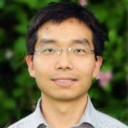 Pan Cao received the B.Eng. and M.Eng. degrees from Xidian University, China, in 2008 and 2011, respectively, and the Dr. Ing (Ph.D.) degree in electrical engineering from TU Dresden, Germany, in 2015. He worked as a Post-Doctoral Research Associate in the Institute for Digital Communications, University of Edinburgh from 2015 to 2017 as well as a visiting researcher at Princeton University in 2017. He has been a Senior Lecturer in electronics and communications at the University of Hertfordshire, U.K., since 2017. His current research interests mainly include millimeter-wave communication, antenna array signal processing. He received the Best Paper Awards of IEEE SPAWC 2012 and International Conference on Machine Learning and Networking 2018, and the Qualcomm Innovation Fellowship Award (QInF) in 2013. He currently serves as an Associate Editor for the EURASIP Journal on Wireless Communications and Networking.
Pan Cao received the B.Eng. and M.Eng. degrees from Xidian University, China, in 2008 and 2011, respectively, and the Dr. Ing (Ph.D.) degree in electrical engineering from TU Dresden, Germany, in 2015. He worked as a Post-Doctoral Research Associate in the Institute for Digital Communications, University of Edinburgh from 2015 to 2017 as well as a visiting researcher at Princeton University in 2017. He has been a Senior Lecturer in electronics and communications at the University of Hertfordshire, U.K., since 2017. His current research interests mainly include millimeter-wave communication, antenna array signal processing. He received the Best Paper Awards of IEEE SPAWC 2012 and International Conference on Machine Learning and Networking 2018, and the Qualcomm Innovation Fellowship Award (QInF) in 2013. He currently serves as an Associate Editor for the EURASIP Journal on Wireless Communications and Networking.
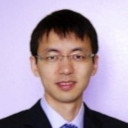 Yuan Shen (S’05-M’14) received his Ph.D. degree and the S.M. degree in electrical engineering and computer science from MIT, Cambridge, MA, USA, in 2014 and 2008, respectively, and the B.E. degree (with highest honor) in electronic engineering from Tsinghua University, Beijing, China, in 2005. He is an Associate Professor with the Department of Electronic Engineering at Tsinghua University. His research focuses on network localization and navigation, inference techniques, resource allocation, and cooperative networks. He is the elected Chair (2019-2020) for the IEEE ComSoc Radio Communications Committee, and has served as TPC symposium Co-Chair for IEEE ICC and Globecom. He is also an Editor for the IEEE TRANSACTIONS ON WIRELESS COMMUNICATIONS, the IEEE WIRELESS COMMUNICATIONS LETTERS, the CHINA COMMUNICATIONS, etc. His papers received the IEEE ComSoc Fred W. Ellersick Prize and three Best Paper Awards from the IEEE conferences.
Yuan Shen (S’05-M’14) received his Ph.D. degree and the S.M. degree in electrical engineering and computer science from MIT, Cambridge, MA, USA, in 2014 and 2008, respectively, and the B.E. degree (with highest honor) in electronic engineering from Tsinghua University, Beijing, China, in 2005. He is an Associate Professor with the Department of Electronic Engineering at Tsinghua University. His research focuses on network localization and navigation, inference techniques, resource allocation, and cooperative networks. He is the elected Chair (2019-2020) for the IEEE ComSoc Radio Communications Committee, and has served as TPC symposium Co-Chair for IEEE ICC and Globecom. He is also an Editor for the IEEE TRANSACTIONS ON WIRELESS COMMUNICATIONS, the IEEE WIRELESS COMMUNICATIONS LETTERS, the CHINA COMMUNICATIONS, etc. His papers received the IEEE ComSoc Fred W. Ellersick Prize and three Best Paper Awards from the IEEE conferences.
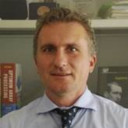 Andrea Conti is a Professor and founding director of the Wireless Communication and Localization Networks Laboratory at the University of Ferrara, Italy. Prior to joining the University of Ferrara, he was with the CNIT and with the IEIIT-CNR. In Summer 2001, he was with the Wireless Systems Research Department at AT&T Research Laboratories. Since 2003, he has been a frequent visitor to the Wireless Information and Network Sciences Laboratory at the Massachusetts Institute of Technology, where he presently holds the Research Affiliate appointment. His research interests involve theory and experimentation of wireless communication and localization. His current research topics include network localization and navigation, distributed sensing, adaptive diversity communications, and quantum information science.
Andrea Conti is a Professor and founding director of the Wireless Communication and Localization Networks Laboratory at the University of Ferrara, Italy. Prior to joining the University of Ferrara, he was with the CNIT and with the IEIIT-CNR. In Summer 2001, he was with the Wireless Systems Research Department at AT&T Research Laboratories. Since 2003, he has been a frequent visitor to the Wireless Information and Network Sciences Laboratory at the Massachusetts Institute of Technology, where he presently holds the Research Affiliate appointment. His research interests involve theory and experimentation of wireless communication and localization. His current research topics include network localization and navigation, distributed sensing, adaptive diversity communications, and quantum information science.
Wednesday 31 March 2021, 16:00 – 17:30
P4. Trends and Technologies for 5G Evolution
Organizer: Zhenfei Tang, Senior Manager of 5G Evolution Research, Huawei, China
Panelists:
- Erik Dahlman, Senior Expert of Radio Access Technologies, Ericsson Research, Sweden
- Xiaodong Xu, Chief Specialist of China Mobile and Vice President of 3GPP RAN Plenary Meeting, CMCC, China
- Slawomir Stanczak, Head of Wireless Communications and Networks Department, Fraunhofer Heinrich Hertz Institute HHI, Germany
- Andreas Mueller, Head of Communication and Network Technology, Bosch Corporate Research, and General Chair of 5G-ACIA, Germany
- Quanzhong (John) Gao, Principal Leader of the 5G Evolution Project, Huawei, China
- Hailiang Jin, Senior Director of Product Support in the Greater China, Rohde & Schwarz, China
Abstract: The evolution of 5G New Radio (NR) has progressed swiftly since the 3GPP standardized the first NR release, i.e., Release 15 in mid-2018. The following release, Release 16, delivering important updates to 5G specifications to broaden their range of commercial applications and improve the efficiency of networks, was completed in early July 2020. Also in July 2020, 3GPP 5G spanning Release 15&16 was formally endorsed as ITU IMT-2020 5G standard.
Nowadays, Release 17 has taken center stage and will further support a wide variety of industry verticals such as smart manufacturing. At the same time, 3GPP also is starting to plan Release 18. It is anticipated that there are still many advanced and challenging use cases with stringent requirements, such as extremely high data rates for emerging mobile AR/VR services, ubiquitous uplink video streaming, deterministic ultra-low latency with high dense users, high-precision wireless positioning with low power consumption and super dense connectivity, etc. Therefore, it will be very timely to investigate how 5G NR evolves towards 2025 from technology and standard points of view, taking into accounts the main requirements, key challenges, and potential technology trends.
In this panel, we will bring together leading experts from the mobile industry. The panel will serve as a good opportunity to share the experts’ views about the 5G technology and standard evolution and provide a bridge between industry and academia.
Biographies:
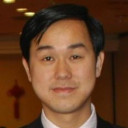 Zhenfei Tang (Moderator) is the senior manager of the 5G evolution research in Huawei. He led 5G evolution research and managed a series of national projects from Huawei. He has been engaged in the research for 3G, 4G and 5G wireless communications systems and was the major representative of Huawei in 3GPP and IMT-Advanced Promotion Group in China since he joined Huawei Technologies Co., Ltd in 2005. Mr. Tang has more than 100 granted patents in the area of wireless communications and contributed more than 500 papers to international standards and meetings. He received his M.S. degree from Beijing University of Posts and Telecommunications in 2004.
Zhenfei Tang (Moderator) is the senior manager of the 5G evolution research in Huawei. He led 5G evolution research and managed a series of national projects from Huawei. He has been engaged in the research for 3G, 4G and 5G wireless communications systems and was the major representative of Huawei in 3GPP and IMT-Advanced Promotion Group in China since he joined Huawei Technologies Co., Ltd in 2005. Mr. Tang has more than 100 granted patents in the area of wireless communications and contributed more than 500 papers to international standards and meetings. He received his M.S. degree from Beijing University of Posts and Telecommunications in 2004.
 Erik Dahlman joined Ericsson in 1993 and is currently Senior Expert in Radio Access Technologies within Ericsson Research. He has been involved in the development of wireless access technologies from early 3G, via 4G LTE, and most 5G NR. He is currently focusing on the evolution of 5G as well as technologies applicable to beyond 5G wireless access. He is the co-author of the books 3G Evolution – HSPA and LTE for Mobile Broadband, 4G – LTE and LTE-Advanced for mobile broadband, 4G – LTE-Advanced Pro and The Road to 5G and, most recently, 5G NR – The Next Generation Wireless Access Technology. He has a PhD in Telecommunication from the Royal Institute of Technology.
Erik Dahlman joined Ericsson in 1993 and is currently Senior Expert in Radio Access Technologies within Ericsson Research. He has been involved in the development of wireless access technologies from early 3G, via 4G LTE, and most 5G NR. He is currently focusing on the evolution of 5G as well as technologies applicable to beyond 5G wireless access. He is the co-author of the books 3G Evolution – HSPA and LTE for Mobile Broadband, 4G – LTE and LTE-Advanced for mobile broadband, 4G – LTE-Advanced Pro and The Road to 5G and, most recently, 5G NR – The Next Generation Wireless Access Technology. He has a PhD in Telecommunication from the Royal Institute of Technology.
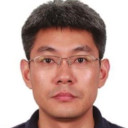 Xiaodong Xu is the one of the chief specialist of China Mobile Group. He has been engaged in the research and standardization of 4G and 5G wireless communications system, and he is responsible for the coordination and supervision of the CMCC’s standardization activities in 3GPP RAN. Dr. Xu has ever served as RAN Vice Chair in last four years and Rapporteur of WI/SI several times in his past experience in 3GPP RAN. Dr. Xu has been granted more than 100 patents in the area of wireless communications, including PHY layer and higher layer. He received his PhD. degree from Southeast University in 2007.
Xiaodong Xu is the one of the chief specialist of China Mobile Group. He has been engaged in the research and standardization of 4G and 5G wireless communications system, and he is responsible for the coordination and supervision of the CMCC’s standardization activities in 3GPP RAN. Dr. Xu has ever served as RAN Vice Chair in last four years and Rapporteur of WI/SI several times in his past experience in 3GPP RAN. Dr. Xu has been granted more than 100 patents in the area of wireless communications, including PHY layer and higher layer. He received his PhD. degree from Southeast University in 2007.
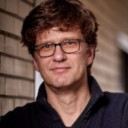 Slawomir Stanczak studied electrical engineering with specialization in control theory at the Wroclaw University of Technology and at the Technical University of Berlin (TU Berlin). He received the Dipl.-Ing. degree in 1998 and the Dr.-Ing. degree (summa cum laude) in electrical engineering in 2003, both from TU Berlin; the Habilitation degree (venialegendi) followed in 2006. Since 2015, he has been a Full Professor for network information theory with TU Berlin and the head of the Wireless Communications and Networks department. In 2004 and 2007, he was a Visiting Professor with RWTH Aachen University, Aachen, Germany, and in 2008, he was a Visiting Scientist with Stanford University, Stanford, CA, USA. Prof. Stanczak is a co-author of two books and more than 200 peer-reviewed journal articles and conference papers in the area of information theory, wireless communications, signal processing and machine learning. Prof. Stanczak received research fellowships from the German Research Foundation and the Best Paper Award from the German Communication Engineering Society in 2014. He served as an Associate Editor of the IEEE Transactions on Signal Processing between 2012 and 2015. Prof. Stanczak was the chairman of the focus group on machine learning for future networks including 5G. Since June 2020 he has been the chairman of the board of the 5G Berlin.
Slawomir Stanczak studied electrical engineering with specialization in control theory at the Wroclaw University of Technology and at the Technical University of Berlin (TU Berlin). He received the Dipl.-Ing. degree in 1998 and the Dr.-Ing. degree (summa cum laude) in electrical engineering in 2003, both from TU Berlin; the Habilitation degree (venialegendi) followed in 2006. Since 2015, he has been a Full Professor for network information theory with TU Berlin and the head of the Wireless Communications and Networks department. In 2004 and 2007, he was a Visiting Professor with RWTH Aachen University, Aachen, Germany, and in 2008, he was a Visiting Scientist with Stanford University, Stanford, CA, USA. Prof. Stanczak is a co-author of two books and more than 200 peer-reviewed journal articles and conference papers in the area of information theory, wireless communications, signal processing and machine learning. Prof. Stanczak received research fellowships from the German Research Foundation and the Best Paper Award from the German Communication Engineering Society in 2014. He served as an Associate Editor of the IEEE Transactions on Signal Processing between 2012 and 2015. Prof. Stanczak was the chairman of the focus group on machine learning for future networks including 5G. Since June 2020 he has been the chairman of the board of the 5G Berlin.
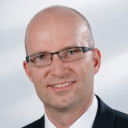 Andreas Mueller is the Head of Communication and Network Technology in the Corporate Research Department of Robert Bosch GmbH in Stuttgart, Germany. In addition to that, he is coordinating the Industrial 5G activities of Bosch across the different business units. He also serves as Chairman of the Board of the “5G Alliance for Connected Industries and Automation” (5G-ACIA), which has been established for driving, shaping and promoting Industrial 5G worldwide. This is done by providing a global forum for discussing related technical, regulatory and business aspects and by bringing all relevant stakeholders together.
Andreas Mueller is the Head of Communication and Network Technology in the Corporate Research Department of Robert Bosch GmbH in Stuttgart, Germany. In addition to that, he is coordinating the Industrial 5G activities of Bosch across the different business units. He also serves as Chairman of the Board of the “5G Alliance for Connected Industries and Automation” (5G-ACIA), which has been established for driving, shaping and promoting Industrial 5G worldwide. This is done by providing a global forum for discussing related technical, regulatory and business aspects and by bringing all relevant stakeholders together.
Prior to joining Bosch, Andreas was a Research Staff Member at the Institute of Telecommunications of the University of Stuttgart, Germany, where he was contributing to the further development of the 3GPP Long Term Evolution towards LTE-Advanced. Besides, he was working as a Systems Engineer for Rohde & Schwarz, developing a novel software-defined radio based communication system for the German Armed Forces. Andreas holds a German Diploma degree as well as a Ph.D. degree in Electrical Engineering (with distinction) and an M.Sc. degree in Information Technology, all from the University of Stuttgart, Germany.
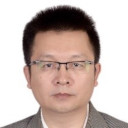 Quanzhong (John) Gao joined Huawei in 1998. He is currently leading the 5G evolution project in Huawei. He was the chief architect for Huawei 5G product and solution. John Gao has engaged in 2G/3G/4G product development and research, and was responsible for 5G product design and research in Huawei. He was also the chief designer for TDD and Massive MIMO products.
Quanzhong (John) Gao joined Huawei in 1998. He is currently leading the 5G evolution project in Huawei. He was the chief architect for Huawei 5G product and solution. John Gao has engaged in 2G/3G/4G product development and research, and was responsible for 5G product design and research in Huawei. He was also the chief designer for TDD and Massive MIMO products.
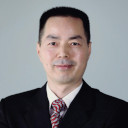 Hailiang Jin joined Rohde & Schwarz in 1997 as the Senior Director of Product Support in the Greater China region. His work primarily focuses on the formulation and implementation of the company’s mid- and long-term technical development plans for the Chinese market while strengthening the company’s technical and innovation capabilities in the region.
Hailiang Jin joined Rohde & Schwarz in 1997 as the Senior Director of Product Support in the Greater China region. His work primarily focuses on the formulation and implementation of the company’s mid- and long-term technical development plans for the Chinese market while strengthening the company’s technical and innovation capabilities in the region.
Mr. Hailiang Jin has over 20 years of extensive experience in custom solutions, product development and application, system integration and marketing for wireless communications, industrial and consumer electronics, national defense and military industry, and other sectors. He holds a US patent for TDD interference cancellation, and is currently formulating technical visions and strategies for Rohde & Schwarz in the Greater China region through a comprehensive understanding of technical trends. Mr. Hailiang Jin currently oversees R&D supervision, provides guidance and insight on specific technical issues, and implements and manages the company’s product operations.
Thursday 1 April 2021, 14:00 – 15:30
P5. Reconfigurable Intelligent Surfaces (RIS) for B5G Wireless Communications
Organizer: Richie Leo, ZTE Corporation, China
Panelists:
- Vincenzo Sciancalepore, NEC Lab, Germany
- Linglong Dai, Tsinghua University, China
- Rui Zhang, National University of Singapore, Singapore
- Alessio Zappone, University of Cassino and Southern Lazio, Italy
- Tie Jun Cui, Southeast University, China
Abstract: With the deployment of commercial 5G systems all over the world, both academia and industry are exploring actively into future technologies for next generation wireless communication systems. Reconfigurable intelligent surfaces (RIS) have been envisioned to reduce the energy consumption and improve the spectral efficiency of wireless networks by artificially re-configuring the propagation environment of electromagnetic waves. RIS-based transmission, in which a large number of small, low-cost, and passive RIS elements only reflect the incident signal with an adjustable reflection amplitude and phase shift without requiring a dedicated energy source for radio frequency processing, or decoding/encoding. This concept is completely different from existing active relays and opens up a new area of research for wireless communications. RIS has a huge potential to revolutionize the design of wireless networks, particularly when combined and integrated together with other B5G candidate technologies such as ultra-massive MIMO, terahertz communications, AI-empowered wireless networks, and edge AI. The panel will address the following aspects:
- Theoretical analysis of RIS-assisted communication capacities
- Practical use cases for RIS in future networks
- Design and testing of RIS
- Communication protocols for RIS-assisted communication systems
- Autonomous deployment of RIS
Biographies:
 Richie Leo (Moderator) received the B.S. and M.S. degree (with honors) in electronic engineering from the Department of Electronic Engineering, Tsinghua University in 2016 and 2019 respectively. He is now a senior researcher in the wireless research institute of ZTE Corporation, responsible for long-term research as well as standardization. His research interests include reconfigurable intelligent surfaces, wireless positioning, visible light communications and quantum communications. He is the co-author of several books or book chapters. He has authored and submitted more than 220 technical documents to 3GPP TSG RAN4, where he serves as the feature lead of IAB RRM and 2-step RACH RRM.
Richie Leo (Moderator) received the B.S. and M.S. degree (with honors) in electronic engineering from the Department of Electronic Engineering, Tsinghua University in 2016 and 2019 respectively. He is now a senior researcher in the wireless research institute of ZTE Corporation, responsible for long-term research as well as standardization. His research interests include reconfigurable intelligent surfaces, wireless positioning, visible light communications and quantum communications. He is the co-author of several books or book chapters. He has authored and submitted more than 220 technical documents to 3GPP TSG RAN4, where he serves as the feature lead of IAB RRM and 2-step RACH RRM.
 Vincenzo Sciancalepore is a Senior Researcher and RAN specialist at NEC Laboratories Europe GmbH, Germany. He is currently focusing his activity in the area of network virtualization, network slicing and edge computing. He is the standard delegate of NEC actively contributing to the standard ETSI MEC (Multi-Access Edge Computing) ISG. He is currently member of the IEEE Emerging Technologies Standing Committee (ETC) leading the initiatives on Software Defined Networking & Network Function Virtualization as well as in the IEEE Mobile Communication Networks Standards Committee (IEEE MobiNet-SC). He is the Industrial Chair of IEEE ComSoc ETI on reconfigurable intelligent surfaces. He currently holds the italian habilitation as associate professor in telecommunications issued by MIUR.
Vincenzo Sciancalepore is a Senior Researcher and RAN specialist at NEC Laboratories Europe GmbH, Germany. He is currently focusing his activity in the area of network virtualization, network slicing and edge computing. He is the standard delegate of NEC actively contributing to the standard ETSI MEC (Multi-Access Edge Computing) ISG. He is currently member of the IEEE Emerging Technologies Standing Committee (ETC) leading the initiatives on Software Defined Networking & Network Function Virtualization as well as in the IEEE Mobile Communication Networks Standards Committee (IEEE MobiNet-SC). He is the Industrial Chair of IEEE ComSoc ETI on reconfigurable intelligent surfaces. He currently holds the italian habilitation as associate professor in telecommunications issued by MIUR.
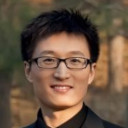 Linglong Dai (M'11-SM'14) received the B.S. degree from Zhejiang University in 2003, the M.S. degree (with the highest honor) from the China Academy of Telecommunications Technology (CATT) in 2006, and the Ph.D. degree (with the highest honor) from Tsinghua University, Beijing, China, in 2011. From 2011 to 2013, he was a Postdoctoral Research Fellow with the Department of Electronic Engineering, Tsinghua University, where he has been an Assistant Professor since July 2013 and then an Associate Professor since June 2016. His current research interests include 5G/6G wireless communication technologies (massive MIMO, millimeter-wave/Terahertz communications, non-orthogonal multiple access, etc.) and machine learning for future wireless communications.
Linglong Dai (M'11-SM'14) received the B.S. degree from Zhejiang University in 2003, the M.S. degree (with the highest honor) from the China Academy of Telecommunications Technology (CATT) in 2006, and the Ph.D. degree (with the highest honor) from Tsinghua University, Beijing, China, in 2011. From 2011 to 2013, he was a Postdoctoral Research Fellow with the Department of Electronic Engineering, Tsinghua University, where he has been an Assistant Professor since July 2013 and then an Associate Professor since June 2016. His current research interests include 5G/6G wireless communication technologies (massive MIMO, millimeter-wave/Terahertz communications, non-orthogonal multiple access, etc.) and machine learning for future wireless communications.
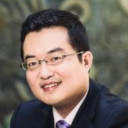 Rui Zhang (IEEE Fellow) received the Ph.D. degree from Stanford University in electrical engineering in 2007. He is now a Professor in the Department of Electrical and Computer Engineering, National University of Singapore. His current research interests include wireless power transfer, UAV communication, and reconfigurable MIMO. He has published over 400 papers, which have been cited more than 40,000 times with h-index over 100. He has been listed as a Highly Cited Researcher by Thomson Reuters/Clarivate Analytics since 2015. His works have received several IEEE awards, including the IEEE Marconi Prize Paper Award in Wireless Communications (twice), the IEEE Communications Society Heinrich Hertz Prize Paper Award (twice), the IEEE Signal Processing Society Best Paper Award, Young Author Best Paper Award and Donald G. Fink Overview Paper Award, etc.
Rui Zhang (IEEE Fellow) received the Ph.D. degree from Stanford University in electrical engineering in 2007. He is now a Professor in the Department of Electrical and Computer Engineering, National University of Singapore. His current research interests include wireless power transfer, UAV communication, and reconfigurable MIMO. He has published over 400 papers, which have been cited more than 40,000 times with h-index over 100. He has been listed as a Highly Cited Researcher by Thomson Reuters/Clarivate Analytics since 2015. His works have received several IEEE awards, including the IEEE Marconi Prize Paper Award in Wireless Communications (twice), the IEEE Communications Society Heinrich Hertz Prize Paper Award (twice), the IEEE Signal Processing Society Best Paper Award, Young Author Best Paper Award and Donald G. Fink Overview Paper Award, etc.
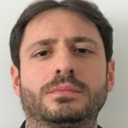 Alessio Zappone (SM'16) received his Ph.D. from the University of Cassino and Southern Lazio, Cassino, Italy. In 2012 he has worked with the Consorzio Nazionale Interuniversitario per le Telecomunicazioni (CNIT) in the framework of the FP7 EU-funded project TREND. From 2012 to 2016 he has been with the Dresden University of Technology, managing the project CEMRIN, funded by the German research foundation. In 2017 he was the recipient of the H2020 Marie Curie fellowship BESMART for experienced researchers, carried out at CentraleSupelec (Gif-sur-Yvette, France). Since 2019, he is a tenured professor at the University of Cassino and Southern Lazio. His research interests lie in the area of communication theory and signal processing, with main focus on optimization techniques for resource allocation and energy efficiency maximization.
Alessio Zappone (SM'16) received his Ph.D. from the University of Cassino and Southern Lazio, Cassino, Italy. In 2012 he has worked with the Consorzio Nazionale Interuniversitario per le Telecomunicazioni (CNIT) in the framework of the FP7 EU-funded project TREND. From 2012 to 2016 he has been with the Dresden University of Technology, managing the project CEMRIN, funded by the German research foundation. In 2017 he was the recipient of the H2020 Marie Curie fellowship BESMART for experienced researchers, carried out at CentraleSupelec (Gif-sur-Yvette, France). Since 2019, he is a tenured professor at the University of Cassino and Southern Lazio. His research interests lie in the area of communication theory and signal processing, with main focus on optimization techniques for resource allocation and energy efficiency maximization.
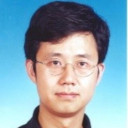 Tie Jun Cui (Fellow, IEEE) received the B.Sc., M.Sc., and Ph.D. degrees in electrical engineering from Xidian University, Xi'an, China, in 1987, 1990, and 1993, respectively. In March 1993, he joined the Department of Electromagnetic Engineering, Xidian University, and was promoted to an Associate Professor in November 1993. From 1995 to 1997, he was a Research Fellow with the Institut fur Hochstfrequenztechnik und Elektronik (IHE), University of Karlsruhe, Karlsruhe, Germany. In July 1997, he joined the Center for Computational Electromagnetics, Department of Electrical and Computer Engineering, University of Illinois at Urbana-Champaign, Urbana, IL, USA, first as a Post-Doctoral Research Associate and then a Research Scientist. In September 2001, he joined the Department of Radio Engineering, Southeast University, Nanjing, China, as a Cheung-Kong Professor, where he became a Chief Professor in January 2018.
Tie Jun Cui (Fellow, IEEE) received the B.Sc., M.Sc., and Ph.D. degrees in electrical engineering from Xidian University, Xi'an, China, in 1987, 1990, and 1993, respectively. In March 1993, he joined the Department of Electromagnetic Engineering, Xidian University, and was promoted to an Associate Professor in November 1993. From 1995 to 1997, he was a Research Fellow with the Institut fur Hochstfrequenztechnik und Elektronik (IHE), University of Karlsruhe, Karlsruhe, Germany. In July 1997, he joined the Center for Computational Electromagnetics, Department of Electrical and Computer Engineering, University of Illinois at Urbana-Champaign, Urbana, IL, USA, first as a Post-Doctoral Research Associate and then a Research Scientist. In September 2001, he joined the Department of Radio Engineering, Southeast University, Nanjing, China, as a Cheung-Kong Professor, where he became a Chief Professor in January 2018.
Thursday 1 April 2021, 16:00 – 17:30
P6. 5G Exposure: Health Risks and New EMF-Aware Cellular Networks Planning
Organizer:
- Mohamed-Slim Alouini, King Abdullah University of Science and Technology (KAUST), Thuwal, Saudi Arabia
Panelists:
- Luca Chiaraviglio, University of Rome - Tor Vergata, Rome, Italy
- Ravazzani Paolo, CNR IEIIT, Milano, Italy
- Jack Rowley, GSMA, UK
- Christer Törneviks, Ericsson, Sweden
Abstract: With the deployment of 5G, there is an increased concern about electro-magnetic fields (EMF) exposure and with it the concern of the general population about the potential health risks associated with the extra RF emissions from 5G base stations. Actually, while there are many serious studies concluding that there is still no compelling motivation to stop the deployment of 5G networks, when the regulations in place are applied, there is clearly a need (1) to continue doing research on possible health effects associated with some realistic exposure levels (i.e., below maximum tolerated limits now) of 5G equipment and devices, and (2) to expand research works from the device, architectural, and network perspectives as well as the health and regulation perspective that aim to design EMF-aware cellular networks for 5G and beyond systems. In this context, this panel aims to go over not only the potential health risks associated with the main features of 5G networks and the new studies that need to be performed to continue assessing the health risks of 5G and beyond networks but also the emerging field of EMF-aware cellular network design, planning, and deployment. The panel will particularly attempt to answer the following questions:
- What lessons can we learn from previous and current generations of wireless communication systems deployment as far as EMF exposure is concerned?
- What are the challenges (technical, political and regulatory, etc …) that will be faced by the emerging and future wireless networks as far as EMF exposure in concerned?
- What are the main breakthrough technologies that will help the design of EMF-aware cellular networks?
Biographies:
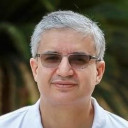 Mohamed-Slim Alouini (Moderator) was born in Tunis, Tunisia. He received the Ph.D. degree in Electrical Engineering from the California Institute of Technology (Caltech), Pasadena, CA, USA, in 1998. He served as a faculty member in the University of Minnesota, Minneapolis, MN, USA, then in the Texas A&M University at Qatar, Education City, Doha, Qatar before joining King Abdullah University of Science and Technology (KAUST), Thuwal, Makkah Province, Saudi Arabia as a Professor of Electrical Engineering in 2009. His current research interests include the modeling, design, and performance analysis of wireless communication systems with current emphasis on global connectivity and digital inclusiveness.
Mohamed-Slim Alouini (Moderator) was born in Tunis, Tunisia. He received the Ph.D. degree in Electrical Engineering from the California Institute of Technology (Caltech), Pasadena, CA, USA, in 1998. He served as a faculty member in the University of Minnesota, Minneapolis, MN, USA, then in the Texas A&M University at Qatar, Education City, Doha, Qatar before joining King Abdullah University of Science and Technology (KAUST), Thuwal, Makkah Province, Saudi Arabia as a Professor of Electrical Engineering in 2009. His current research interests include the modeling, design, and performance analysis of wireless communication systems with current emphasis on global connectivity and digital inclusiveness.
 Luca Chiaraviglio is Associate Professor at the Networking Group in the Department of Electronic Engineering of University of Rome Tor Vergata (Italy). He holds a M.Sc. in Computer Engineering and a Ph.D. in Telecommunication and Electronics Engineering, both obtained from Polytechnic of Turin (Italy). He has spent visiting and/or research periods at Boston University (USA), INRIA Sophia Antipolis (France), Auckland University of Technology (New Zealand) and ETECSA S.A. (Cuba). Previously to join the University of Rome Tor Vergata, he held different research and/or teaching positions at the University of Rome Sapienza (Italy) and at the University of Cassino and Southern Lazio (Italy).
Luca Chiaraviglio is Associate Professor at the Networking Group in the Department of Electronic Engineering of University of Rome Tor Vergata (Italy). He holds a M.Sc. in Computer Engineering and a Ph.D. in Telecommunication and Electronics Engineering, both obtained from Polytechnic of Turin (Italy). He has spent visiting and/or research periods at Boston University (USA), INRIA Sophia Antipolis (France), Auckland University of Technology (New Zealand) and ETECSA S.A. (Cuba). Previously to join the University of Rome Tor Vergata, he held different research and/or teaching positions at the University of Rome Sapienza (Italy) and at the University of Cassino and Southern Lazio (Italy).
 Paolo Ravazzani, MS in Electronic Engineering and Ph.D. in Bioengineering, is Research Director of the National Research Council. Since December 2018 he is serving as Director of the Institute of Electronics and Information Engineering CNR IEIIT. His scientific interests are related to the study of the applications of electromagnetic fields (EMFs) in medicine and health, to their characterization for biomedical systems and devices, to the study of methods for the evaluation of exposure of electromagnetic fields at low frequencies and microwaves and to the study the possible health impact of exposure to electromagnetic fields.
Paolo Ravazzani, MS in Electronic Engineering and Ph.D. in Bioengineering, is Research Director of the National Research Council. Since December 2018 he is serving as Director of the Institute of Electronics and Information Engineering CNR IEIIT. His scientific interests are related to the study of the applications of electromagnetic fields (EMFs) in medicine and health, to their characterization for biomedical systems and devices, to the study of methods for the evaluation of exposure of electromagnetic fields at low frequencies and microwaves and to the study the possible health impact of exposure to electromagnetic fields.
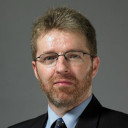 Jack Rowley, Ph.D is the Senior Director for Research &Sustainability and works in the Advocacy Department of the GSMA. He is responsible for technical and policy activities related to the safety of mobile communications and responsible environmental practices. In this role, he manages relationships with major stakeholders such as the WHO and the ITU, develops technical advice for members and coordinates GSMA strategy related to EMF. He has30-years of experience in the telecommunications industry and joined the GSMA in 2000.
Jack Rowley, Ph.D is the Senior Director for Research &Sustainability and works in the Advocacy Department of the GSMA. He is responsible for technical and policy activities related to the safety of mobile communications and responsible environmental practices. In this role, he manages relationships with major stakeholders such as the WHO and the ITU, develops technical advice for members and coordinates GSMA strategy related to EMF. He has30-years of experience in the telecommunications industry and joined the GSMA in 2000.
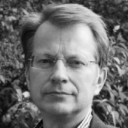 Christer Törnevik (Member, IEEE) received the M.Sc. degree in applied physics from Linköping University, Linköping, Sweden, in 1986, and the Licentiate degree in materials science from the Royal Institute of Technology, Stockholm, Sweden, in 1991. He joined Ericsson in 1991. Since 1993, he has been involved in research activities related to radio frequency exposure from wireless communication equipment. He is currently a Senior Expert with responsibility for electromagnetic fields and health within the Ericsson Group.
Christer Törnevik (Member, IEEE) received the M.Sc. degree in applied physics from Linköping University, Linköping, Sweden, in 1986, and the Licentiate degree in materials science from the Royal Institute of Technology, Stockholm, Sweden, in 1991. He joined Ericsson in 1991. Since 1993, he has been involved in research activities related to radio frequency exposure from wireless communication equipment. He is currently a Senior Expert with responsibility for electromagnetic fields and health within the Ericsson Group.



